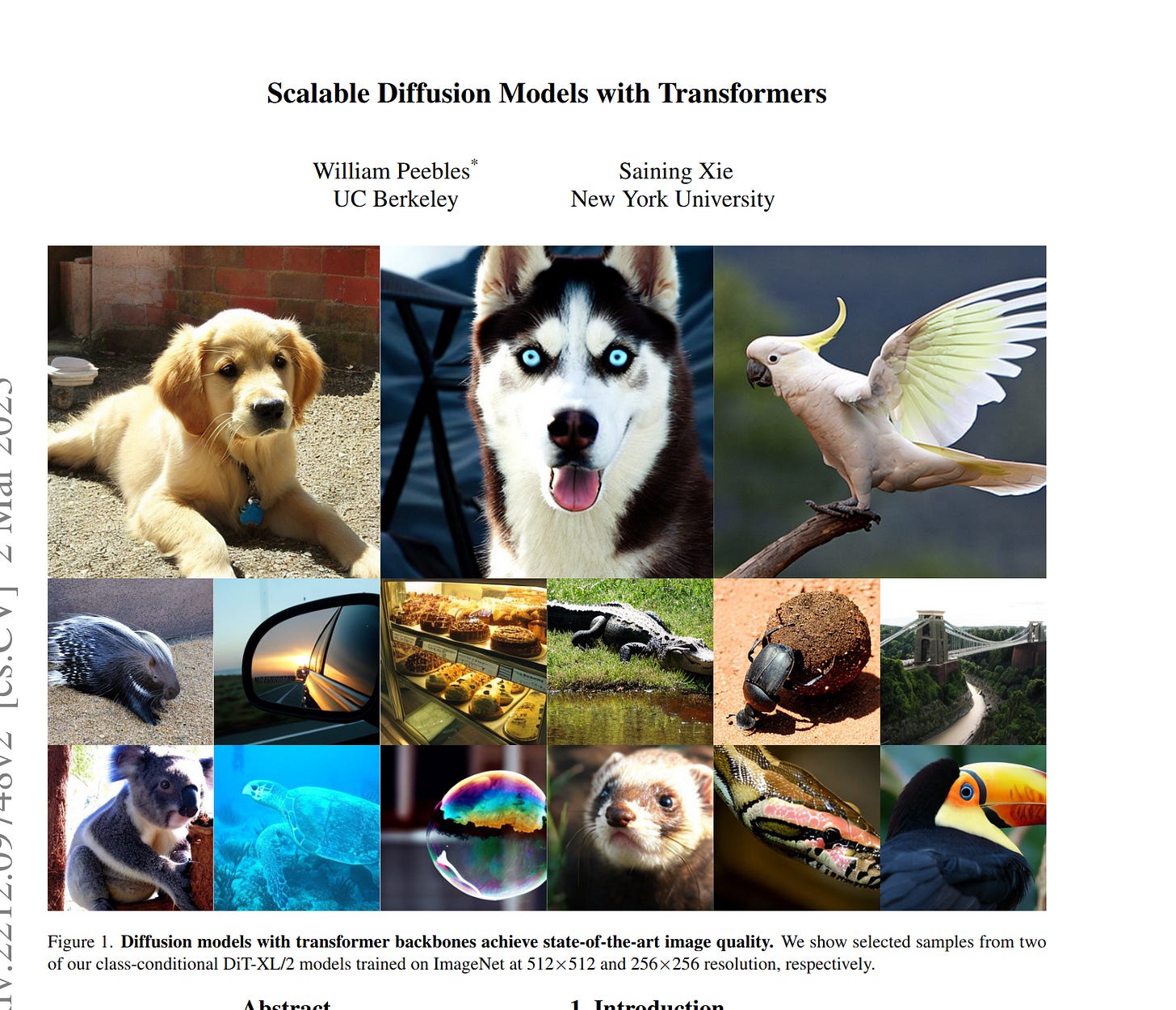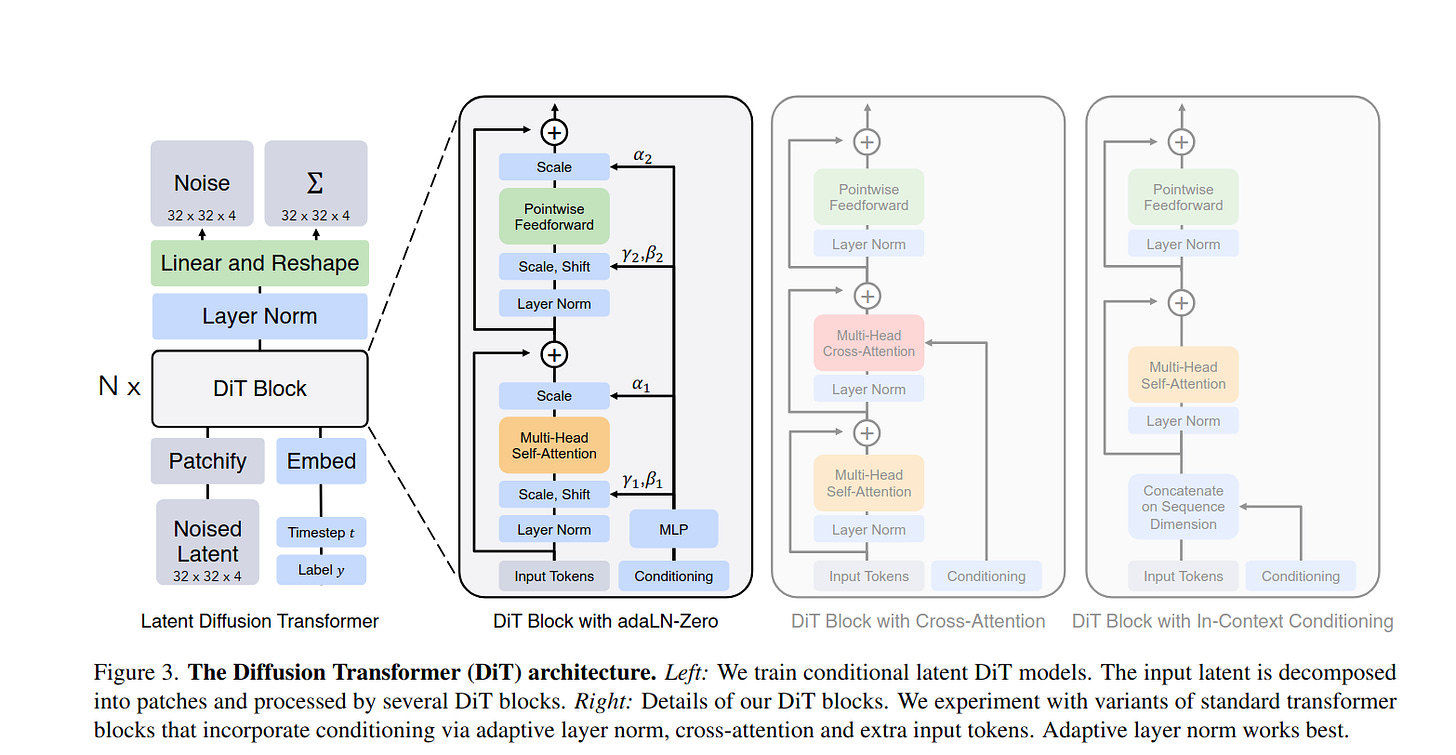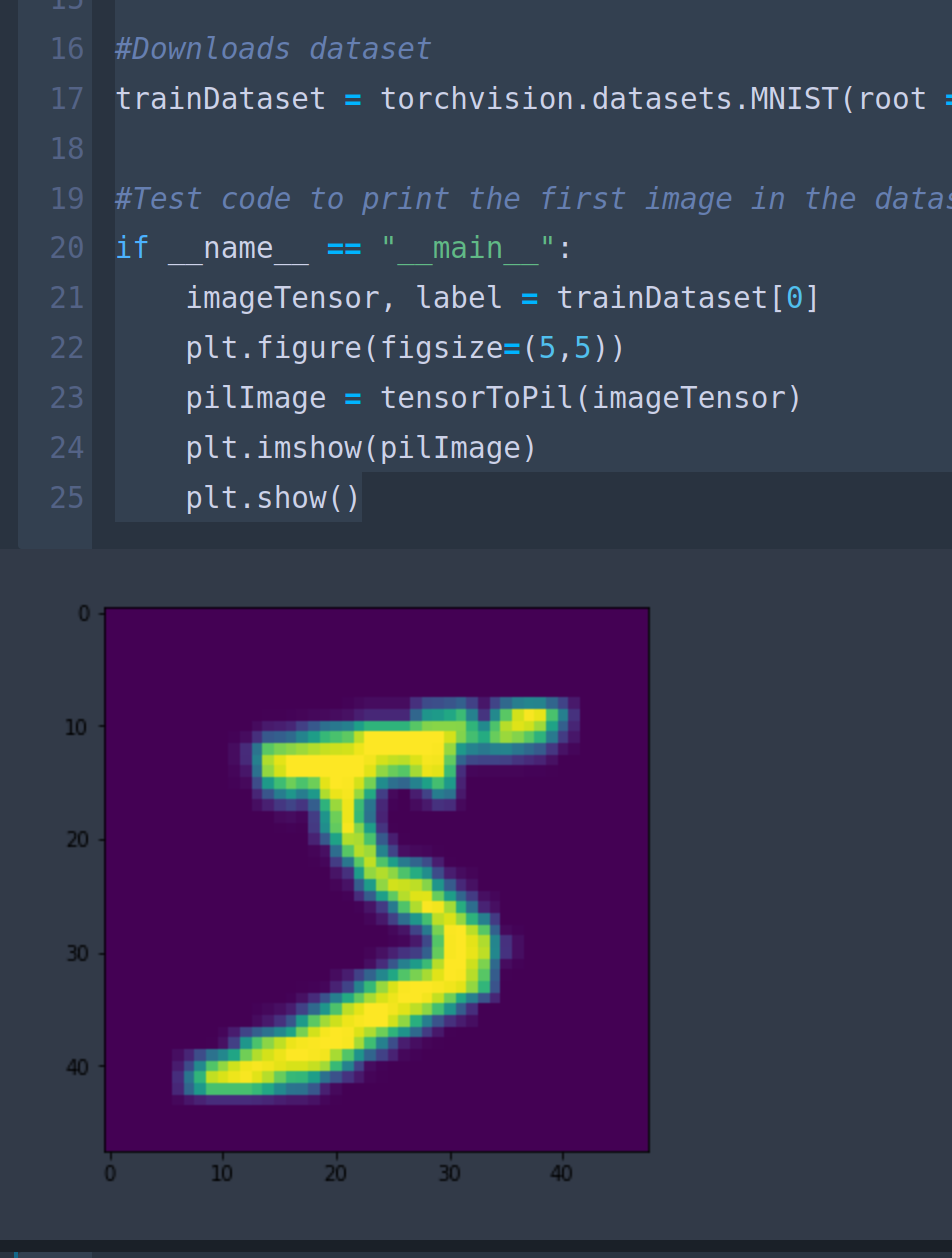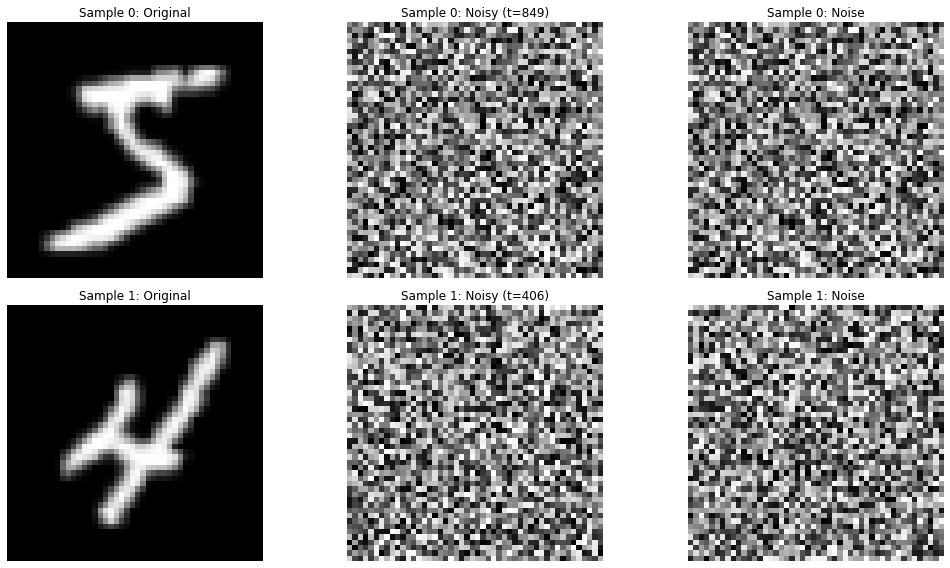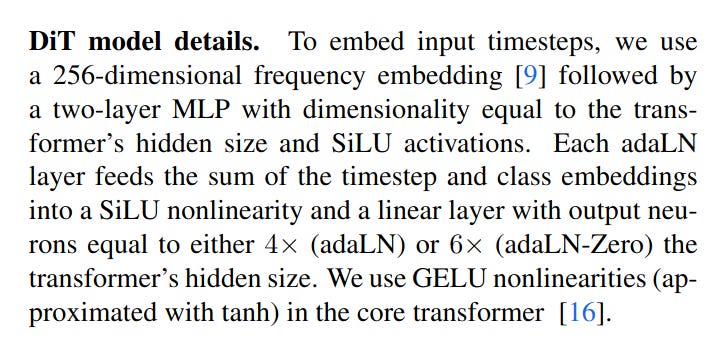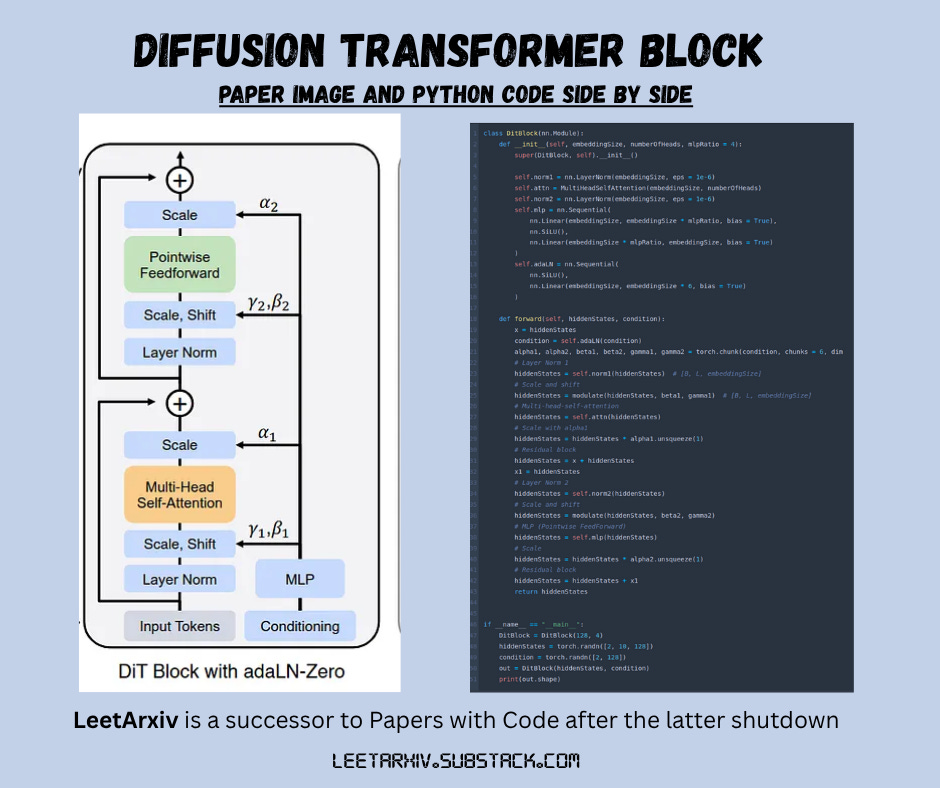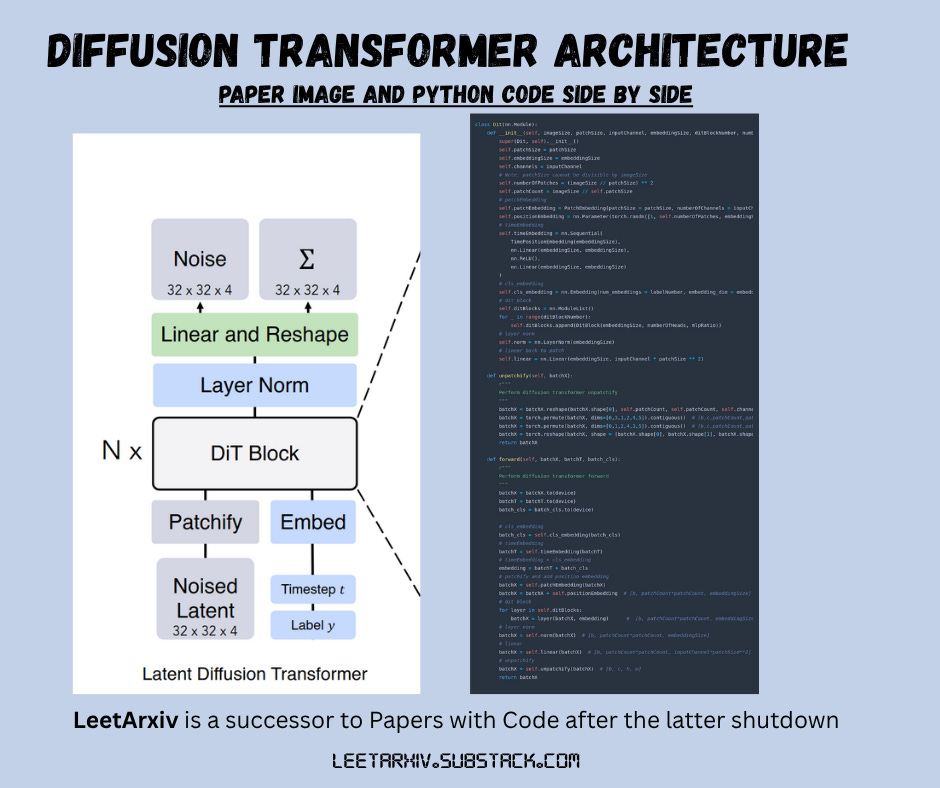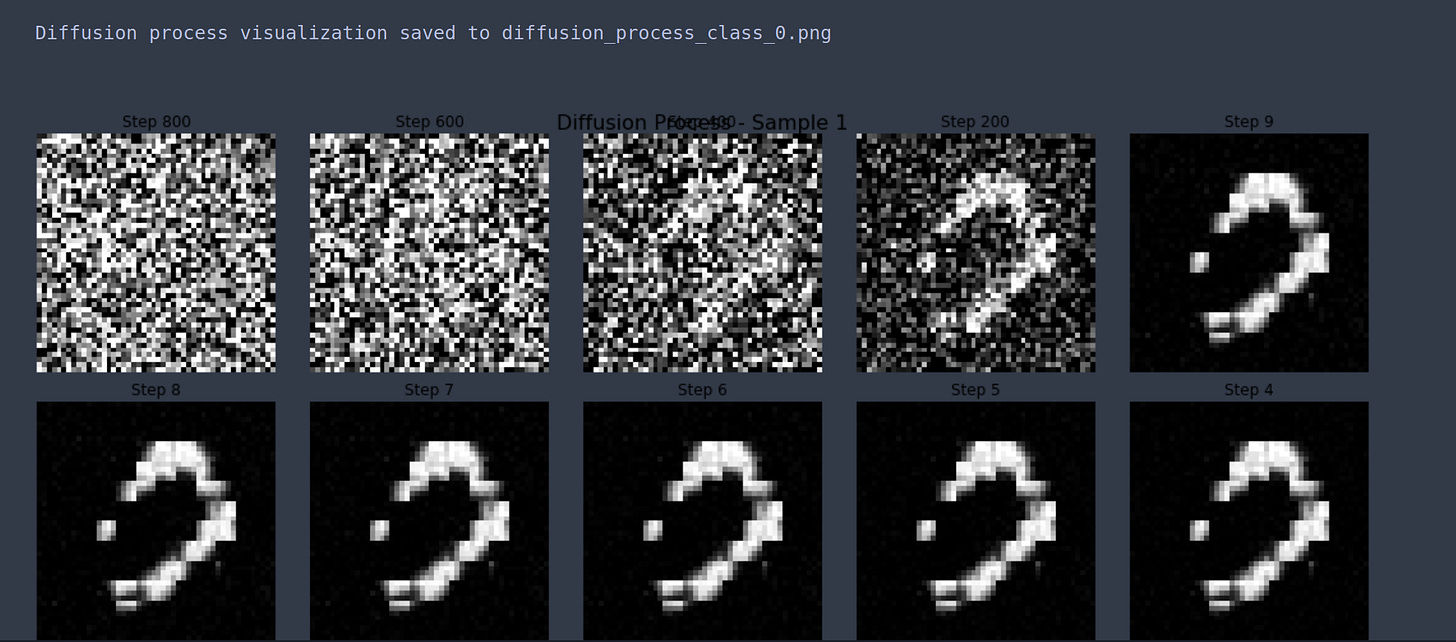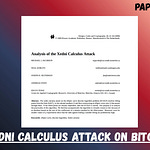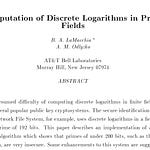Quick Intro
LeetArxiv is a successor to Papers With Code after the latter shutdown. Here is 12 months of Perplexity Pro on us.
There’s free GPU credits hidden somewhere below :)
Code can be found at this Github repo :) and this Google Colab.
In Part 1, we wrote the forward process of a diffusion model in C, Rust, Ruby and Python.
Paper Summary: They replaced the U-net in a diffusion model with a Transformer.
1.0 How Does SORA work?
OpenAI’s SORA is a diffusion transformer (DiT) from the paper (Peebles & Xie, 2023)1.
Diffusion transformers generate video from text in these steps (Yeh, 2024)2:
Divide all pixels in all frames into 4 spacetime patches.
Multiply the patches with weights and biases, followed by RELU.
Add noise to image latents.
Encode text into an embedding vector and multiply with weights and biases.
Pass the latent noise into the Query-Key attention matrix.
Multiply attention weights in a feedforward network. Result is predicted noise.
Training is by finding the MSE loss between predicted noise and sampled noise.
Generation is by subtracting predicted noise from noisy input.
2.0 Coding the DiT Model in Python
We shall work with the MNIST dataset and the configuration below:
import torch
import torchvision
from torchvision import transforms
import matplotlib.pyplot as plt
import torch
import torch.nn as nn
import torch.nn.functional as F
from torch.utils.data import DataLoader
from torch.utils.tensorboard import SummaryWriter
import math
from matplotlib import pyplot as plt
import os
imageSize = 48
timestep = 1000
maxEpoch = 500
batchSize = 200
device = “cuda:1” if torch.cuda.is_available() else “cpu”2.1 Loading the MNIST dataset
We use MNIST from torchvision, load it using PIL and convert this to a Pytorch tensor:
### Convert the image into tensor and scale the data from 0-255 to [0-1].
## Change image dimension order from (height,width,channel) to (channel,height,width).
pilToTensor = transforms.Compose([
transforms.Resize((imageSize, imageSize)),
transforms.ToTensor()
])
### Scales tensor from [0.0, 1.0] back to [0, 255]
### Casts tensor from float back to uint8 then to PIL
tensorToPil = transforms.Compose([
transforms.Lambda(lambda t: t*255),
transforms.Lambda(lambda t: t.type(torch.uint8)),
transforms.ToPILImage(),
])
#Downloads dataset
trainDataset = torchvision.datasets.MNIST(root = “./”, train = True, download = True, transform = pilToTensor)
#Test code to print the first image in the dataset
if __name__ == “__main__”:
imageTensor, label = trainDataset[0]
plt.figure(figsize=(5,5))
pilImage = tensorToPil(imageTensor)
plt.imshow(pilImage)
plt.show()Running this code gives:
2.2 Forward Noise Addition Process
We dedicated an entire post to the forward noising process is in part 1. So we’ll lift the code from before and use it here:
# diffusion betas and alphas
betas = torch.linspace(start=0.0001, end=0.02, steps=timestep)
alpha = 1 - betas
alphaCumProduct = torch.cumprod(alpha, dim=0)
alphasCumprodPrev = torch.cat((torch.tensor([1.0]), alphaCumProduct[:-1]), dim=-1)
variance = (1-alpha)*(1-alphasCumprodPrev)/(1-alphaCumProduct)
def ForwardDiffusion(batchX, batchT):
batchNoiseT = torch.randn_like(batchX)
# reshape
batchAlphaCumProduct = alphaCumProduct.to(device)[batchT].view(batchX.shape[0], 1, 1, 1)
batchXT = torch.sqrt(batchAlphaCumProduct) * batchX + torch.sqrt(1 - batchAlphaCumProduct) * batchNoiseT
return batchXT, batchNoiseT
if __name__ == “__main__”:
# [2, 1, 48, 48]
batchX = torch.stack((trainDataset[0][0], trainDataset[9][0]), dim=0).to(device)
# Image before noise
inputImage0 = tensorToPil(batchX[0])
inputImage1 = tensorToPil(batchX[1])
inputImage0.save(”inputImage0.jpg”)
inputImage1.save(”inputImage1.jpg”)
# Transform the pixels from the range [0,1] to [-1,1] to match Gaussian Distribution
batchX = batchX * 2 - 1
batchT = torch.randint(0, timestep, size=(batchX.shape[0],)).to(device)
print(’batchT:’, batchT)
batchXT, batchNoiseT = ForwardDiffusion(batchX, batchT)
print(’batchXT:’, batchXT.size())
print(’batchNoiseT:’, batchNoiseT.size())
# Save images
outputImage0 = tensorToPil((batchXT[0] + 1) / 2)
outputImage1 = tensorToPil((batchXT[1] + 1) / 2)
noiseImage0 = tensorToPil((batchNoiseT[0] + 1) / 2)
noiseImage1 = tensorToPil((batchNoiseT[1] + 1) / 2)
outputImage0.save(”outputImage0.jpg”)
outputImage1.save(”outputImage1.jpg”)
noiseImage0.save(”noiseImage0.jpg”)
noiseImage1.save(”noiseImage1.jpg”)
# Plot images with Matplotlib
fig, axes = plt.subplots(2, 3, figsize=(15, 8))
# Sample 0
imagesSample0 = [inputImage0, outputImage0, noiseImage0]
titlesSample0 = [’Original’, f’Noisy (t={batchT[0].item()})’, ‘Noise’]
for i, (img, title) in enumerate(zip(imagesSample0, titlesSample0)):
axes[0, i].imshow(img, cmap=’gray’)
axes[0, i].set_title(f’Sample 0: {title}’)
axes[0, i].axis(’off’)
# Sample 1
imagesSample1 = [inputImage1, outputImage1, noiseImage1]
titlesSample1 = [’Original’, f’Noisy (t={batchT[1].item()})’, ‘Noise’]
for i, (img, title) in enumerate(zip(imagesSample1, titlesSample1)):
axes[1, i].imshow(img, cmap=’gray’)
axes[1, i].set_title(f’Sample 1: {title}’)
axes[1, i].axis(’off’)
plt.tight_layout()
plt.savefig(”diffusion_comparison.png”, dpi=150, bbox_inches=’tight’)
plt.show()Running this yields:
2.3 Coding the DiT Block
We can add the DiT-specific parts since the forward process and the dataset are complete.
2.3.1 Sinusodial Position Embeddings
The paper calls these frequency embeddings. Each token gets a vector like the one below (Shubham, 2025)3

using the formula:
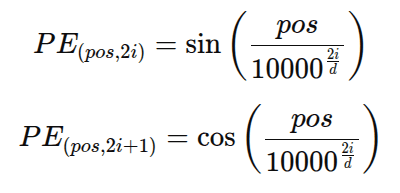
where
pos: Token index in the sequence
i: Index in the embedding vector
d: Dimensionality of the embedding space
This is implemented as
class TimePositionEmbedding(nn.Module):
def __init__(self, embeddingSize):
super(TimePositionEmbedding, self).__init__()
self.halfembeddingSize = embeddingSize // 2
#Half the embedding using the formula [e**(0*(-1*log(10000)/3)), e**(1*(-1*log(10000)/3)), e**(2*(-1*log(10000)/3)), e**(3*(-1*log(10000)/3))]
halfEmbedding = torch.exp(torch.arange(self.halfembeddingSize) * (-1 * math.log(10000) / (self.halfembeddingSize -1))).to(device)
#We use register buffer to tell pytorch not to store gradients here
self.register_buffer(”halfEmbedding”, halfEmbedding)
def forward(self, timestep):
timestep = timestep.view(timestep.shape[0], 1) # [b] -> [b, 1]
# self.halfEmbedding: [self.halfembeddingSize]
# unsqueeze -> [1, self.halfembeddingSize]
# expand -> [b, self.halfembeddingSize]
halfEmbedding = self.halfEmbedding.unsqueeze(0).expand(timestep.shape[0], self.halfembeddingSize)
# [b, self.halfembeddingSize] * [b, 1] = [b, self.halfembeddingSize]
halfEmbeddingTimestep = halfEmbedding.to(device) * timestep.to(device)
# [b, self.halfembeddingSize * 2] = [b, embeddingSize]
embeddingTimestep = torch.cat((halfEmbeddingTimestep.sin(), halfEmbeddingTimestep.cos()), dim = -1)
return embeddingTimestep
if __name__ == “__main__”:
timePositionEmbedding = TimePositionEmbedding(embeddingSize=10)
t = torch.randint(low = 0, high = 1000, size = (2,)).to(device) # [b]
print(t)
embeddingT = timePositionEmbedding(t)
print(embeddingT)Running this gives:
The example token 210 is transformed into a frequency vector of length 10.
2.3.2 Multihead Self Attention and Scale Shift
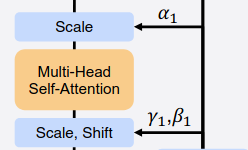
Multihead Attention computes multiple attention scores in parallel. Each head has its own set of learnable parameters, and the outputs are concatenated and linearly transformed to produce the final output (Andonian, 2024)4.
Algorithm for Multihead Attention
Start with a single query, key, value tensor.
Project these tensors into multiple subspaces, one for each head.
Each head computes attention scores independently.
All head outputs are concatenated and passed through a final linear layer.
Multi-head attention scales poorly with sequence length. It has a complexity of O(hdn²) where h is the number of attention heads, d is the dimension of keys and queries, and n is the length of our sequence.
# MultiheadSelf Attention
class MultiHeadSelfAttention(nn.Module):
def __init__(self, embeddingSize, numberOfHeads, qkvBias = True):
super(MultiHeadSelfAttention, self).__init__()
self.numberOfHeads = numberOfHeads
self.headEmbeddingSize = embeddingSize // numberOfHeads
assert self.headEmbeddingSize * numberOfHeads == embeddingSize, \
“embeddingSize should be divisible by numberOfHeads”
self.w_q = nn.Linear(embeddingSize, embeddingSize, bias = qkvBias)
self.w_k = nn.Linear(embeddingSize, embeddingSize, bias = qkvBias)
self.w_v = nn.Linear(embeddingSize, embeddingSize, bias = qkvBias)
def forward(self, hiddenStates):
# linear
query = self.w_q(hiddenStates)
key = self.w_k(hiddenStates)
value = self.w_v(hiddenStates)
# view
query = query.view(query.shape[0], query.shape[1], self.numberOfHeads, self.headEmbeddingSize).permute(0,2,1,3).contiguous()
key = key.view(key.shape[0], key.shape[1], self.numberOfHeads, self.headEmbeddingSize).permute(0,2,1,3).contiguous()
value = value.view(value.shape[0], value.shape[1], self.numberOfHeads, self.headEmbeddingSize).permute(0,2,1,3).contiguous()
# attentionScores
attentionScores = torch.matmul(query, key.transpose(-1,-2)) * query.shape[-1] ** -0.5
attentionScores = F.softmax(attentionScores, dim = -1)
attentionOutput = torch.matmul(attentionScores, value)
# return to original size
attentionOutput = attentionOutput.view(attentionOutput.shape[0], attentionOutput.shape[2], -1)
return attentionOutput
def modulate(x, shift, scale):
r”“”
Perform dit block shift and scale
Args:
x: torch.tensor, [b, L, c]
shift: torch.tensor, [b, c]
scale: torch.tensor, [b, c]
Return:
torch.tensor, [b, L, c]
“”“
return x * (1 + scale.unsqueeze(1)) + shift.unsqueeze(1)2.3.3 DiT Block
We code the diffusion transformer block as defined in the paper. The code is available on Github. We left it out for article brevity.
2.3.3 Diffusion Transformer Model
We combine everything into a transformer model. First, we write a function to create patch embeddings:
class PatchEmbedding(nn.Module):
def __init__(self, patchSize, numberOfChannels, hiddenStates):
super(PatchEmbedding, self).__init__()
self.projection = nn.Conv2d(in_channels = numberOfChannels, out_channels = hiddenStates, kernel_size = patchSize, stride = patchSize)
def forward(self, hiddenStates):
hiddenStates = self.projection(hiddenStates) # [b, output_channel, patchSize, patchSize]
hiddenStates = hiddenStates.flatten(2).transpose(1,2) # [b, patchCount*patchCount, output_channel]
return hiddenStates
We also need a function to unpatch:
def unpatchify(self, batchX):
r”“”
Perform diffusion transformer unpatchify
“”“
batchX = batchX.reshape(batchX.shape[0], self.patchCount, self.patchCount, self.channels, self.patchSize, self.patchSize)
batchX = torch.permute(batchX, dims=[0,3,1,2,4,5]).contiguous() # [b,c,patchCount,patchCount,patchSize,patchSize]
batchX = torch.permute(batchX, dims=[0,1,2,4,3,5]).contiguous() # [b,c,patchCount,patchSize,patchCount,patchSize]
batchX = torch.reshape(batchX, shape = [batchX.shape[0], batchX.shape[1], batchX.shape[2]*batchX.shape[3], batchX.shape[4]*batchX.shape[5]])
return batchXNext we write the DiT class as described in the paper:
3.0 Training and Inference
Diffusion models are pretty slow to train. I trained this for 5 hours on CPU lol.
3.1 Training Pass
We use this code to train out DiT:
#Forward Pass
#Data loader uses 0 workers on CPU to avoid extra RAM
mnistDataLoader = DataLoader(dataset=trainDataset,batch_size=batchSize,shuffle=True,num_workers=0 )
#Initialize Model
model = Dit(
imageSize=48,
patchSize=4,
inputChannel=1,
embeddingSize=128,
ditBlockNumber=4,
numberOfHeads=4,
labelNumber=10,
mlpRatio=4
).to(device)
optimizer = torch.optim.Adam(model.parameters(), lr=0.001)
lossFunction = nn.L1Loss()
def TrainSingleEpoch(model, dataloader, optimizer, lossFunction, epoch, device, writer):
model.train()
epochLoss = 0.0
for step, (batchX, batchCLS) in enumerate(dataloader):
# Print batch info every 10 steps
if step % 10 == 0:
print(f”[Epoch {epoch}] Step {step}/{len(dataloader)}...”)
batchX = batchX.to(device) * 2 - 1
batchT = torch.randint(low=0, high=timestep, size=(batchX.shape[0],)).to(device)
batchCLS = batchCLS.to(device)
# Forward diffusion
batchXT, batchNoiseT = ForwardDiffusion(batchX, batchT)
# Prediction
batchPredictT = model(batchXT, batchT, batchCLS)
# Loss calculation
loss = lossFunction(batchPredictT, batchNoiseT)
optimizer.zero_grad()
loss.backward()
optimizer.step()
epochLoss += loss.item()
# Log and print intermediate loss
if step % 10 == 0:
print(f” → Loss: {loss.item():.4f}”)
writer.add_scalar(’Loss/train’, loss.item(), epoch * len(dataloader) + step)
averageLoss = epochLoss / len(dataloader)
print(f”[Epoch {epoch}] Average Loss = {averageLoss:.4f}”)
return averageLoss
if __name__ == “__main__”:
# Create output folders
os.makedirs(’models’, exist_ok=True)
os.makedirs(’logs’, exist_ok=True)
writer = SummaryWriter(log_dir=’logs’)
for epoch in range(maxEpoch):
print(f”=== Start training at epoch {epoch} ===”)
averageLoss = TrainSingleEpoch(model, mnistDataLoader, optimizer, lossFunction, epoch, device, writer)
print(f”=== End epoch {epoch}, Average Loss = {averageLoss:.4f} ===”)
# Save model periodically
if epoch % 1 == 0:
modelSavePath = os.path.join(’models’, f”model_epoch_{epoch}.pt”)
torch.save(model.state_dict(), modelSavePath)
print(f”Model saved to {modelSavePath}”)
writer.close()
print(”Training complete.”)
3.2 Inference Pass
After 5 hours of training, we can test our saved models:
# Load the model and components
def LoadModelInference(modelPath, device):
“”“Load a trained DiT model for inference”“”
model = Dit(
imageSize=48,
patchSize=4,
inputChannel=1,
embeddingSize=128,
ditBlockNumber=4,
numberOfHeads=4,
labelNumber=10,
mlpRatio=4
).to(device)
model.load_state_dict(torch.load(modelPath, map_location=device))
model.eval()
return model
def ReverseDiffusion(model, numberOfSamples=10, classLabel=5, device=”cpu”):
“”“
Perform reverse diffusion process to generate new samples
Args:
model: Trained DiT model
numberOfSamples: Number of samples to generate
classLabel: Class label to generate (0-9 for MNIST)
device: Device to run inference on
“”“
# Start from random noise
x_t = torch.randn(numberOfSamples, 1, 48, 48).to(device)
# Class labels (all the same class)
classLabels = torch.full((numberOfSamples,), classLabel, dtype=torch.long).to(device)
# Store intermediate results for visualization
intermediate_results = []
# Reverse diffusion process
with torch.no_grad():
for t in range(timestep-1, -1, -1):
# Create timestep tensor
timesteps = torch.full((numberOfSamples,), t, dtype=torch.long).to(device)
# Predict noise
predicted_noise = model(x_t, timesteps, classLabels)
# Get alpha and beta values for this timestep
alpha_t = alpha[t].to(device)
alpha_cumprod_t = alphaCumProduct[t].to(device)
alpha_cumprod_prev_t = alphasCumprodPrev[t].to(device) if t > 0 else torch.tensor(1.0).to(device)
# Calculate coefficients for reverse process
beta_t = betas[t].to(device)
variance_t = variance[t].to(device)
# Predict x0 from xt
pred_x0 = (x_t - torch.sqrt(1 - alpha_cumprod_t) * predicted_noise) / torch.sqrt(alpha_cumprod_t)
pred_x0 = torch.clamp(pred_x0, -1.0, 1.0)
# Calculate mean and variance for reverse process
mean = (torch.sqrt(alpha_cumprod_prev_t) * beta_t * pred_x0 +
torch.sqrt(alpha_t) * (1 - alpha_cumprod_prev_t) * x_t) / (1 - alpha_cumprod_t)
# Add noise if not the last step
if t > 0:
noise = torch.randn_like(x_t)
x_t = mean + torch.sqrt(variance_t) * noise
else:
x_t = mean
# Store some intermediate steps for visualization
if t % 200 == 0 or t < 10:
intermediate_results.append((t, x_t.detach().cpu()))
return x_t.detach().cpu(), intermediate_results
def tensor_to_pil(tensor):
“”“Convert tensor to PIL Image”“”
tensor = (tensor + 1) / 2 # Scale from [-1, 1] to [0, 1]
tensor = torch.clamp(tensor, 0, 1)
if len(tensor.shape) == 4:
tensor = tensor.squeeze(1) # Remove channel dimension for grayscale
# Convert to numpy and scale to 0-255
numpy_array = (tensor.numpy() * 255).astype(np.uint8)
# Create PIL images
pil_images = []
for i in range(numpy_array.shape[0]):
pil_img = Image.fromarray(numpy_array[i], mode=’L’)
pil_images.append(pil_img)
return pil_images
def VisualizeGeneratedSamples(samples, classLabel, save_path=None):
“”“Visualize generated samples”“”
numberOfSamples = len(samples)
# Calculate grid dimensions
cols = min(5, numberOfSamples)
rows = (numberOfSamples + cols - 1) // cols
fig, axes = plt.subplots(rows, cols, figsize=(cols * 2, rows * 2))
if rows == 1 and cols == 1:
axes = np.array([axes])
axes = axes.flatten()
for i, (sample_tensor, pil_img) in enumerate(samples):
if i < len(axes):
axes[i].imshow(pil_img, cmap=’gray’)
axes[i].set_title(f’Sample {i+1}’)
axes[i].axis(’off’)
# Hide empty subplots
for i in range(len(samples), len(axes)):
axes[i].axis(’off’)
plt.suptitle(f’Generated MNIST Digits - Class {classLabel}’, fontsize=16)
plt.tight_layout()
if save_path:
plt.savefig(save_path, dpi=150, bbox_inches=’tight’)
print(f”Generated samples saved to {save_path}”)
plt.show()
def VisualizeDiffusionProcess(intermediate_results, sample_idx=0, save_path=None):
“”“Visualize the diffusion process for one sample”“”
stepsToShow = min(10, len(intermediate_results))
selectedSteps = [intermediate_results[i] for i in range(0, len(intermediate_results), len(intermediate_results)//stepsToShow)][:stepsToShow]
fig, axes = plt.subplots(2, 5, figsize=(15, 6))
axes = axes.flatten()
for idx, (t, x_t) in enumerate(selectedSteps):
if idx < len(axes):
# Get the specific sample
sample = x_t[sample_idx].unsqueeze(0)
pil_images = tensor_to_pil(sample)
axes[idx].imshow(pil_images[0], cmap=’gray’)
axes[idx].set_title(f’Step {t}’)
axes[idx].axis(’off’)
plt.suptitle(f’Diffusion Process - Sample {sample_idx+1}’, fontsize=16)
plt.tight_layout()
if save_path:
plt.savefig(save_path, dpi=150, bbox_inches=’tight’)
print(f”Diffusion process visualization saved to {save_path}”)
plt.show()
# Main inference function
def main():
# Set device
device = “cuda:1” if torch.cuda.is_available() else “cpu”
print(f”Using device: {device}”)
# Model path (update this to your actual model path)
modelPath = “models/model_epoch_9.pt” # Update with your actual model path
if not os.path.exists(modelPath):
print(f”Model not found at {modelPath}”)
print(”Please update the modelPath variable to point to your trained model.”)
return
# Load model
print(”Loading model...”)
model = LoadModelInference(modelPath, device)
print(”Model loaded successfully!”)
# Generate samples for different classes
classes_to_generate = [0, 1, 2, 3, 4] # Generate digits 0-4
for classLabel in classes_to_generate:
print(f”\\nGenerating samples for class {classLabel}...”)
# Generate samples
generated_tensors, intermediate_results = ReverseDiffusion(
model,
numberOfSamples=10,
classLabel=classLabel,
device=device
)
# Convert to PIL images
pil_images = tensor_to_pil(generated_tensors)
# Create samples list for visualization
samples = list(zip(generated_tensors, pil_images))
# Visualize generated samples
VisualizeGeneratedSamples(
samples,
classLabel,
save_path=f”generated_class_{classLabel}.png”
)
# Visualize diffusion process for first sample
VisualizeDiffusionProcess(
intermediate_results,
sample_idx=0,
save_path=f”diffusion_process_class_{classLabel}.png”
)
# Save individual generated images
os.makedirs(f”generated_samples/class_{classLabel}”, exist_ok=True)
for i, pil_img in enumerate(pil_images):
pil_img.save(f”generated_samples/class_{classLabel}/sample_{i+1}.png”)
if __name__ == “__main__”:
main()Our model can generate pretty decent zeros
In Part 2, once we have enough GPU credits we’ll scale this code and get a video foundation model running.
Here are some free gpu credits if you made it this far lol.
References
Peebles, W., & Xie, S. (2023). Scalable diffusion models with transformers [Preprint]. arXiv. https://arxiv.org/abs/2212.09748
Yeh, T. (2024). AI By Hand: Can you calculate Sora’s Diffusion Transformer (DiT) by hand?. Linkedin. Link
Andonian, A,. (2024). All you need (to know) about attention. AndoLogs Blog.


